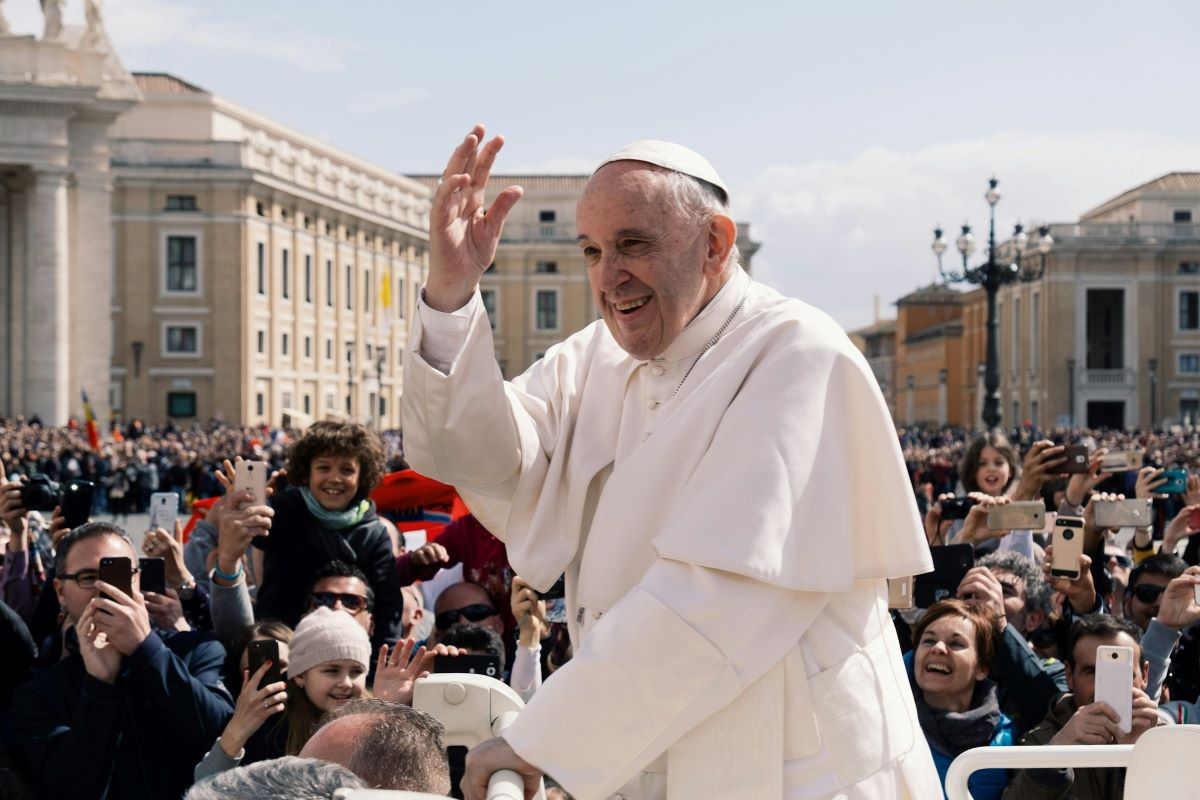This article is also available in Italian / Questo articolo è disponibile anche in italiano
With the death of Pope Francis, one of the most powerful voices of our time in the fight for climate justice and environmental protection has fallen silent. Jorge Mario Bergoglio, the “Pope from the end of the world,” put at the core of his papacy the defence of the Earth and the poor. He was a beacon for believers and non-believers alike.
Starting from the choice of his name, Francis – that evoked “the man who loved and cared for Creation” -, Bergoglio signalled a turning point in the history of the Church and in the relationship between faith and the environment. “Oh, how I would like a poor Church, and for the poor! This is why I chose the name Francis, like Francis of Assisi,” he said during his first press conference. His name already held everything together: poverty, peace, interreligious dialogue, love for the Earth.
His commitment materialised in 2015 with the publication of Laudato si’, the first encyclical in the history of the Church entirely devoted to the climate crisis. In that document, the Pope outlined with theological and moral rigour the urgency of an “integral ecology”: a vision of the environment that weaves together nature, social justice, human dignity, and culture. Laudato si’ was a manifesto released the very same year as the Paris Climate Agreement.
In his address to the United Nations General Assembly, Pope Francis warned: “The ecological crisis and the large-scale destruction of biodiversity can threaten the very existence of the human species”. But he did not stop at condemnation. He convened Big Oil - Eni, Chevron, Conoco, Exxon, BP, and BlackRock - at the Vatican for an unprecedented dialogue on energy and environmental responsibility.
And he went even further: the 2019 pan-amazon synod, the apostolic exhortation Querida Amazonia, the proposal to introduce sins against ecology into catechism, the call to recognize ecocide as an international crime against peace. Pope Francis turned the fight against climate change into a spiritual mission, a universal moral imperative. No ambiguity, no sweetened words: “The use of nuclear weapons, as well as their mere possession, is immoral,” he declared amid growing global turmoil.
In 2023, in Laudate Deum, the second milestone of his ecological magisterium, he updated his call to action: “I feel obliged to make these clarifications, which may appear obvious, because of certain dismissive and scarcely reasonable opinions that I encounter, even within the Catholic Church. Yet we can no longer doubt that the reason for the unusual rapidity of these dangerous changes is a fact that cannot be concealed: the enormous novelties that have to do with unchecked human intervention on nature in the past two centuries.”
His teaching transcended religious boundaries. He spoke to younger generations, he met with Greta Thunberg and Bono Vox, and he openly condemned both “climate denial” and the “the greedy pursuit of short-term gains by polluting industries” He called for a “new financial architecture” to address the needs of the Global South and Small Island States battered by climate disasters.
In one of his final public addresses, he reminded the world that nearly one billion of the planet’s poorest children live in areas of “high climate risk”. He added that this reality makes political and economic inaction “a grave sin.” His increasingly straightforward words have become a legacy: “The destruction of the environment is an offense against God.”
Francis was a trailblazing Pope, particularly for what regards the environment. In a world torn apart by conflicts and inequality, he had the courage to ask the most uncomfortable question of all: “Are we working for a culture of life, or a culture of death?”. Today, we must carry forward one lesson: protecting the Earth is not just a political or economic imperative, it is an act of faith in humanity. The Common Home has lost one of its most tireless defenders. Yet his voice will remain, more relevant than ever.
Cover: Pope Francis photographed by Ashwin Vaswani, Unsplash



